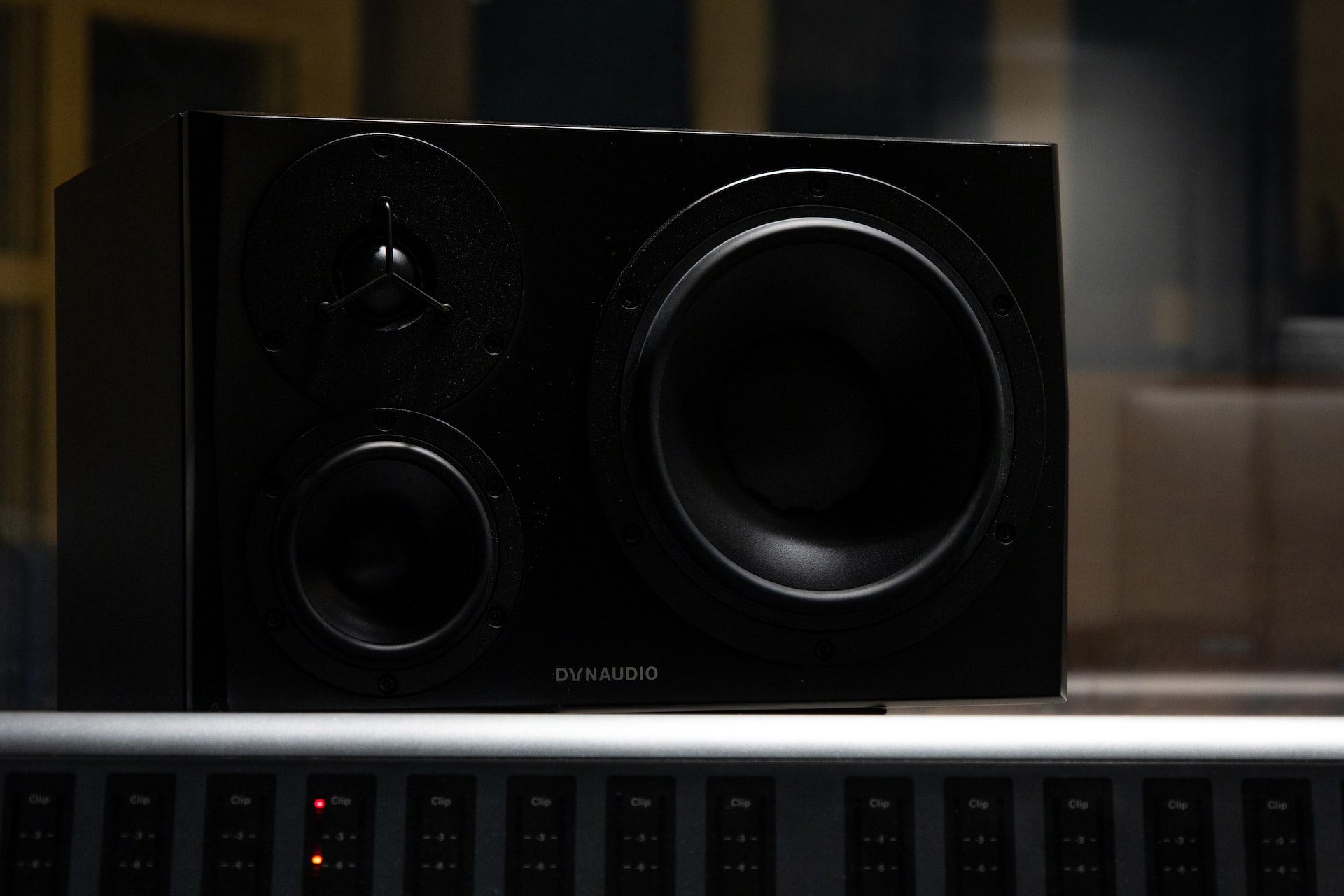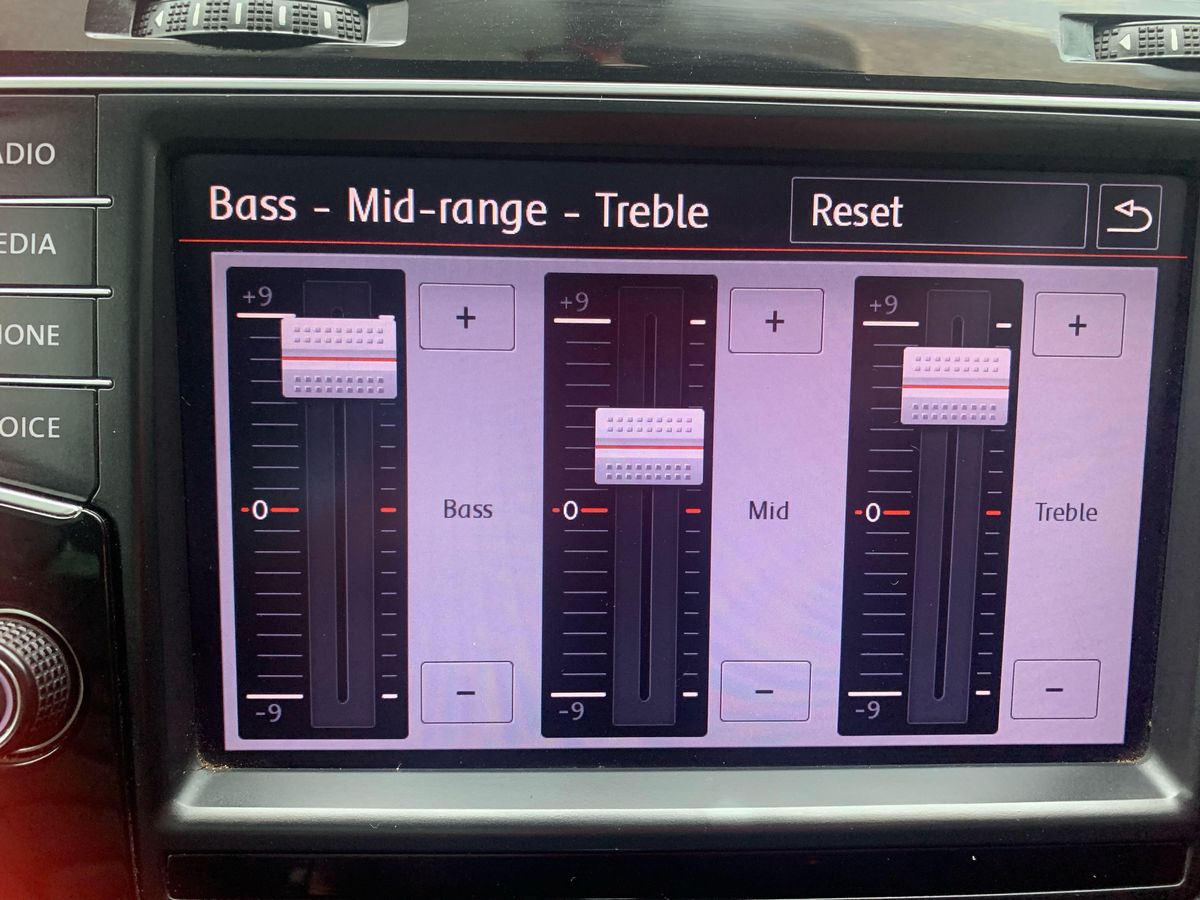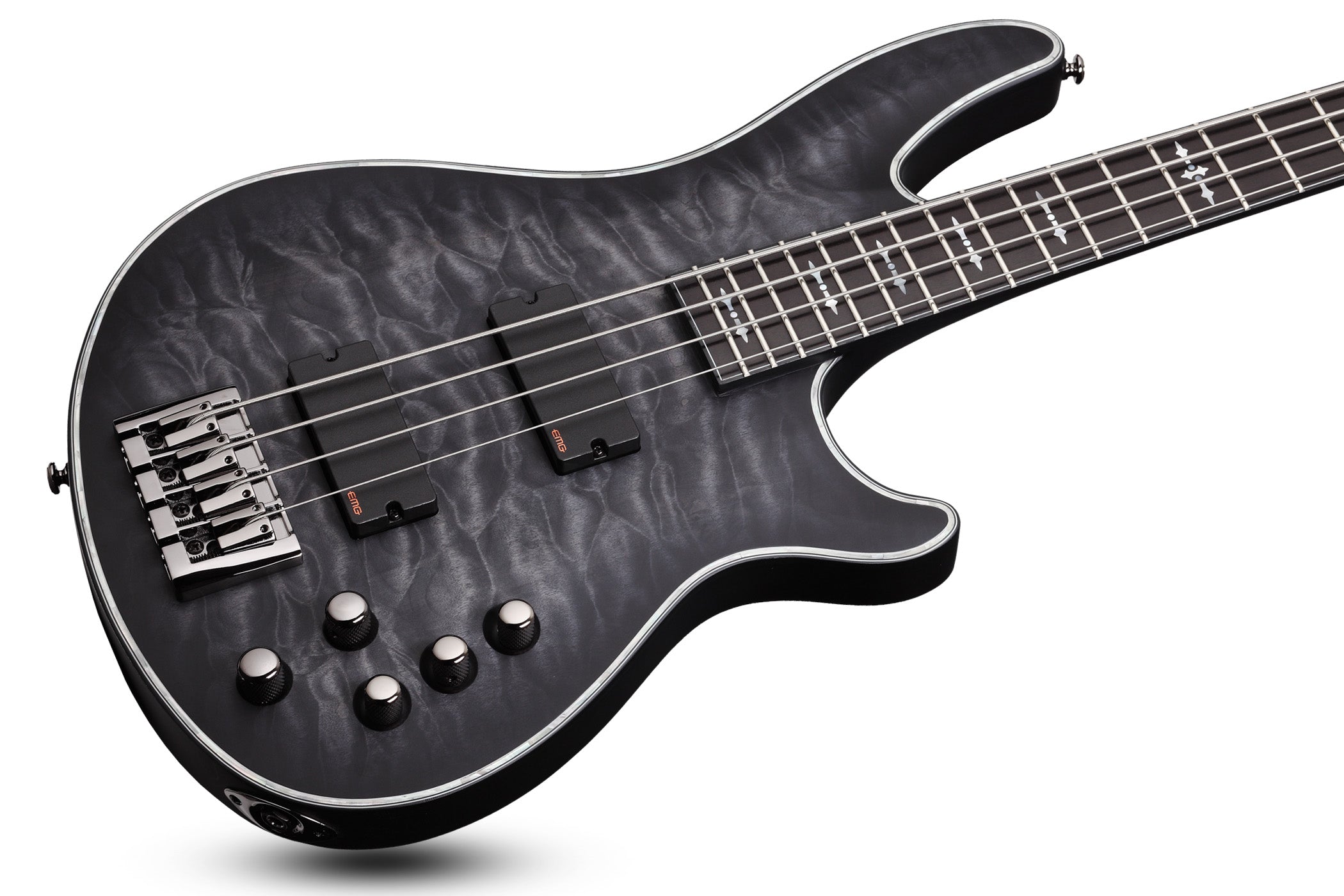Home>Instruments>Bass>What Ohm Is Best For Bass


Bass
What Ohm Is Best For Bass
Modified: January 22, 2024
Discover the best ohm rating for your bass. Enhance your sound quality with the right impedance. Find out more about the perfect ohm rating for bass speakers.
(Many of the links in this article redirect to a specific reviewed product. Your purchase of these products through affiliate links helps to generate commission for AudioLover.com, at no extra cost. Learn more)
Table of Contents
Introduction
When it comes to bass, it’s not just about the rhythm and groove; the quality of sound also plays a crucial role. One of the key factors that determines the sound quality of your bass is the ohm rating. Understanding the concept of ohm and how it affects your bass can significantly impact your overall musical experience.
Ohm refers to the unit of electrical resistance, and in the context of bass, it pertains to the impedance of the speaker or amplifier. In simpler terms, ohms indicate how much electrical resistance the speaker or amplifier presents to the flow of audio signals from your bass.
The ohm rating has a direct impact on the electrical power delivered to your speakers and the resulting sound quality. Choosing the right ohm rating for your bass setup is essential to ensure optimal performance and achieve the desired sound.
In this article, we will delve into the importance of ohm in bass, explore the factors to consider when selecting the appropriate ohm rating, and discuss the various ohm options available for bass. Whether you’re a beginner or a seasoned bassist, understanding the significance of ohm in bass will help you make informed decisions and maximize your musical output.
Understanding Ohm
Before diving into the impact of ohm on bass, let’s first gain a clear understanding of what ohm really means. Ohm is a unit of electrical resistance, named after the German physicist Georg Simon Ohm, who formulated Ohm’s Law.
Ohm’s Law states that the current flowing through a conductor is directly proportional to the voltage applied to it and inversely proportional to the resistance of the conductor. In simpler terms, it means that as the resistance (ohms) increases, the current decreases.
In the context of bass, ohm refers to the impedance of the speaker or amplifier. Impedance is the overall opposition to the flow of an alternating current. It includes both resistance and reactance, which considers the complex nature of electrical signals produced by musical instruments.
Impedance can be thought of as the “load” on the amplifier. The lower the ohm rating, the easier it is for the amplifier to drive the speaker, resulting in higher volume levels. Conversely, a higher ohm rating creates more resistance and requires more power to drive the speaker, resulting in lower volume levels.
It’s important to note that bass speakers are usually designed with specific impedance ratings, commonly 4 ohms or 8 ohms. This rating indicates the minimum impedance the speaker can handle and is matched with the amplifier’s output impedance for optimal performance.
Additionally, it’s worth mentioning that impendence can vary with frequency. This is known as impedance curve irregularities or impedance swings. These irregularities can affect the overall sound reproduction and should be taken into account when selecting the appropriate ohm rating for your bass setup.
Importance of Ohm in Bass
The ohm rating plays a vital role in the overall sound quality and performance of your bass setup. Choosing the right ohm rating is crucial for several reasons:
- Compatibility: Matching the impedance of your bass speakers with the amplifier’s output impedance ensures proper electrical signal transfer. This compatibility ensures efficient power delivery and prevents potential damage to your equipment.
- Power Handling: Different ohm ratings require different power levels to produce the same volume. A lower ohm rating will demand more power from the amplifier, while a higher ohm rating will require less power. Understanding the power handling capabilities of your equipment will help you achieve optimal sound without straining your gear.
- Tone and Sound: The ohm rating directly influences the damping factor, which is the ability of the amplifier to control the movement of the speaker cone. This affects the tightness and responsiveness of the bass sound. Different ohm ratings can result in variations in tone and sound reproduction, allowing you to tailor your bass setup to your desired preferences.
- Flexibility: Selecting a bass setup with multiple speaker cabinets allows for flexibility in sound reinforcement. By combining different ohm ratings, you can create unique soundscapes, broaden the frequency response, and distribute the load across multiple speakers for a richer and more immersive bass experience.
Understanding the importance of ohm in bass empowers you to make informed decisions when selecting your equipment. Whether you prioritize power, tone, flexibility, or a combination of these factors, choosing the right ohm rating is essential for achieving the best possible sound from your bass setup.
Factors to Consider for Bass Ohm
When selecting the ohm rating for your bass setup, there are several factors to consider to ensure optimal performance and compatibility. These factors include:
- Amplifier Compatibility: Check the specifications of your amplifier to determine its recommended or ideal ohm rating. Some amplifiers have a fixed output impedance, while others may have options to switch between different ohm settings. Matching the ohm rating of your bass speakers to the amplifier’s output impedance ensures proper power delivery and prevents potential damage to your equipment.
- Speaker Cabinet Configuration: If you use multiple speaker cabinets in your bass setup, consider how they are wired. Different wiring configurations, such as series or parallel, can affect the overall ohm load. Ensure that the combined impedance of all the speakers aligns with the amplifier’s output impedance to avoid any impedance mismatch or uneven power distribution.
- Power Handling: Take into account the power handling capabilities of your bass speakers and amplifier. The ohm rating affects the power demand on the amplifier. Higher ohm ratings require less power, while lower ohm ratings demand more power. Make sure your amplifier can comfortably handle the power requirements of the chosen ohm rating to avoid overheating or damaging the equipment.
- Tone Preference: Consider the tonal characteristics you desire from your bass setup. Different ohm ratings can affect the overall tone and sound reproduction. Lower ohm ratings tend to produce a tighter and more responsive bass sound, with enhanced low-end frequencies. Higher ohm ratings can result in a slightly smoother and more rounded sound. Experiment with different ohm ratings to find the tone that best suits your style and musical preferences.
- Budget: Finally, take into account your budget when selecting the ohm rating for your bass setup. Generally, lower ohm speakers tend to be more expensive due to their power requirements and construction. Higher ohm speakers are often more affordable and can still deliver excellent sound quality. Consider your budget constraints while prioritizing the compatibility and performance factors mentioned above.
By considering these factors, you can make an informed decision and choose the right ohm rating that suits your bass setup, amplifier, and personal preferences. It’s important to strike a balance between compatibility, power handling, tonal characteristics, and budget to achieve the best sound quality and performance from your bass rig.
Different Ohm Options for Bass
When it comes to bass, there are typically two main ohm options available: 4 ohms and 8 ohms. Each option offers its own set of advantages and considerations, allowing you to choose the one that best suits your needs and preferences.
- 4 Ohms: Bass speakers with a 4 ohm rating are generally more power-hungry and require a robust amplifier to deliver the necessary power. They are designed to handle higher power levels, making them a popular choice for professional bassists and those seeking maximum volume and headroom. Additionally, speakers with lower ohm ratings tend to provide tighter bass response and enhanced low-end frequencies, resulting in a more pronounced and punchy tone.
- 8 Ohms: Bass speakers with an 8 ohm rating are more common and widely available. They require less power compared to 4 ohm speakers, making them suitable for a wider range of amplifiers. 8 ohm speakers tend to be more affordable and provide a slightly smoother and more rounded sound compared to their 4 ohm counterparts. They are a popular choice among musicians who prioritize versatility, as they can be easily used with various amplifier setups without straining the equipment.
It’s important to note that there are other ohm options available for bass, such as 16 ohms and even higher. However, these options are less commonly used and often limited to specific speakers or amplifier configurations.
When considering the different ohm options for bass, it’s crucial to take into account your amplifier’s capabilities, power requirements, and desired sound characteristics. Additionally, factors such as the size of your performance space, playing style, and budget should be considered when making a decision.
Ultimately, the choice between a 4 ohm and 8 ohm bass setup depends on your specific needs and preferences. Both options can deliver excellent sound quality and performance when paired with the appropriate amplifier and speaker combination. Don’t hesitate to experiment and try out different ohm ratings to find the one that suits your playing style and musical goals.
Pros and Cons of Low Ohm Bass Setups
Low ohm bass setups, typically using 4 ohm speakers, offer several advantages and considerations that are important to keep in mind. Let’s explore the pros and cons of using a low ohm bass setup.
- Pros:
- Better power handling: Low ohm speakers demand more power from the amplifier, allowing for higher volume levels and greater headroom. This is particularly beneficial for gigs or performances in larger venues where you need the extra power to stand out in the mix.
- Tighter bass response: Lower ohm ratings tend to result in a tighter and more focused bass sound. This can be advantageous for genres that require precise and punchy bass lines, enhancing the overall clarity and definition of your playing.
- Enhanced low-end frequencies: Low ohm speakers often have a more pronounced low-end response, providing a powerful and deep bass presence. This can be desirable for genres such as metal or funk, where a strong and impactful bass tone is essential.
- Cons:
- Power requirements: Low ohm speakers demand more power from the amplifier, which means you will need a robust and capable amp to achieve optimal performance. This can result in additional cost and may limit your options if your amplifier is not designed for low ohm loads.
- Compatibility limitations: Some amplifiers may have a fixed output impedance that is not suitable for low ohm speakers. Ensure that your amplifier is compatible with low ohm loads before investing in a low ohm bass setup.
- Cost: Generally, low ohm speakers tend to be more expensive due to their power handling capabilities and construction. This can be a significant investment, particularly if you require multiple speakers to achieve the desired volume levels.
When considering a low ohm bass setup, carefully evaluate your power needs, playing style, and budget. If you play in larger venues, prioritize a powerful and tight bass sound, and have the appropriate amplifier, a low ohm setup can be a great choice. However, be aware of the compatibility limitations and the potential cost implications associated with this setup.
Ultimately, finding the right balance between your playing requirements and equipment capabilities is crucial in determining whether a low ohm bass setup is the ideal choice for your musical needs.
Pros and Cons of High Ohm Bass Setups
High ohm bass setups, typically utilizing 8 ohm speakers, offer their own set of advantages and considerations. Let’s explore the pros and cons of using a high ohm bass setup.
- Pros:
- Amplifier compatibility: High ohm speakers are generally more compatible with a wider range of amplifiers. They can be used with amps that have higher output impedance or offer multiple ohm options, providing more flexibility in your gear choices.
- Affordability: High ohm speakers tend to be more affordable compared to their low ohm counterparts. This makes them a cost-effective option, especially if you’re on a budget or looking to build a bass setup without breaking the bank.
- Versatility: The higher impedance of these speakers means they require less power from the amplifier. As a result, they can be used in various settings, including small gigs, practice spaces, or home studio setups, where lower volume levels are required.
- Cons:
- Lower power handling: High ohm speakers demand less power from the amplifier, which can limit their ability to handle high volume levels and provide sufficient headroom. This makes them less suitable for loud performances or venues that require a significant amount of bass projection.
- Slightly rounded sound: Compared to low ohm speakers, high ohm speakers may produce a slightly smoother and more rounded sound. While this can be desirable for certain musical styles, it may not provide the same punch and tightness as a low ohm setup.
- Less pronounced low-end response: High ohm speakers generally have a slightly less pronounced low-end response. If achieving a deep and powerful bass tone is a priority for your playing style or genre, a low ohm setup may be more suitable.
When considering a high ohm bass setup, assess your specific requirements and preferences. If you prioritize amplifier compatibility, affordability, and versatility in various playing settings, a high ohm setup can be a practical option. However, keep in mind the limitations in power handling and the potential trade-offs in tonal characteristics compared to low ohm setups.
The decision to choose a high ohm bass setup ultimately depends on your playing style, the type of venues you perform in, your budget, and the tone you aim to achieve. Evaluate these factors carefully and experiment with different setups to find the right balance between your requirements and the capabilities of your equipment.
Selecting the Best Ohm for Bass
When it comes to selecting the best ohm rating for your bass setup, there is no one-size-fits-all answer. The choice depends on several factors, including your amplifier, speaker compatibility, power requirements, playing style, and desired sound characteristics. Here are some steps to help you make an informed decision:
- Check your amplifier’s specifications: Start by reviewing your amplifier’s recommended ohm ratings or output impedance options. Ensure that the amplifier can handle the ohm load of your chosen speakers.
- Consider your power requirements: Determine the power needs of your bass setup based on your playing style, venue size, and desired volume levels. If you require high volume and headroom, a low ohm setup may be more suitable. For smaller venues or lower volume settings, a high ohm setup can be sufficient.
- Evaluate tonal preferences: Think about the tone you want to achieve from your bass setup. If you desire a tighter and more focused bass sound with enhanced low-end frequencies, a low ohm setup may deliver the desired results. On the other hand, if you prefer a slightly smoother and rounded sound, a high ohm setup might be more appropriate.
- Consider equipment compatibility: Ensure that your chosen speakers and amplifier are compatible in terms of ohm ratings. Match the impedance of the speakers to the amplifier’s output impedance or select speakers that can handle the ohm load of your amplifier.
- Factor in budget constraints: Evaluate your budget and the cost implications of the chosen ohm rating. Low ohm speakers often come at a higher cost compared to high ohm speakers. Consider the balance between performance and affordability when making a decision.
By taking these steps and considering the various factors, you can select the best ohm rating for your bass setup. Remember that there is no right or wrong choice, as it ultimately depends on your specific needs and preferences as a bassist.
Additionally, don’t be afraid to experiment and try different ohm setups to find the one that suits your playing style, musical goals, and equipment capabilities. The process of finding the best ohm rating for your bass setup can be an exciting journey of discovering new tones and exploring the possibilities of your instrument.
Conclusion
Understanding the significance of ohm in bass is essential for any bassist looking to optimize their sound quality and performance. The ohm rating directly impacts the power handling, tone, and overall compatibility of your bass setup. By considering factors such as amplifier compatibility, power requirements, tonal preferences, and budget constraints, you can select the best ohm rating for your specific needs.
Low ohm bass setups, typically using 4 ohm speakers, offer benefits such as better power handling, tighter bass response, and enhanced low-end frequencies. However, they require powerful amplifiers and may come with a higher cost. On the other hand, high ohm bass setups, utilizing 8 ohm speakers, provide compatibility with a wider range of amplifiers, affordability, and versatility, though they may have limitations in power handling and low-end response.
Ultimately, the choice between low ohm and high ohm setups depends on your individual goals as a bassist. Take into account your playing style, venue size, desired tone, and budget when making a decision. Experimentation and finding the right balance between equipment capabilities and personal preferences will lead you to the optimal ohm rating for your bass setup.
Remember, there is no one-size-fits-all answer in selecting the best ohm for bass. It’s important to find what works best for you and your musical journey. Whether you prioritize power, tone, versatility, or a combination of these factors, choosing the right ohm rating will significantly enhance your bass playing experience and ensure you achieve the desired sound.











